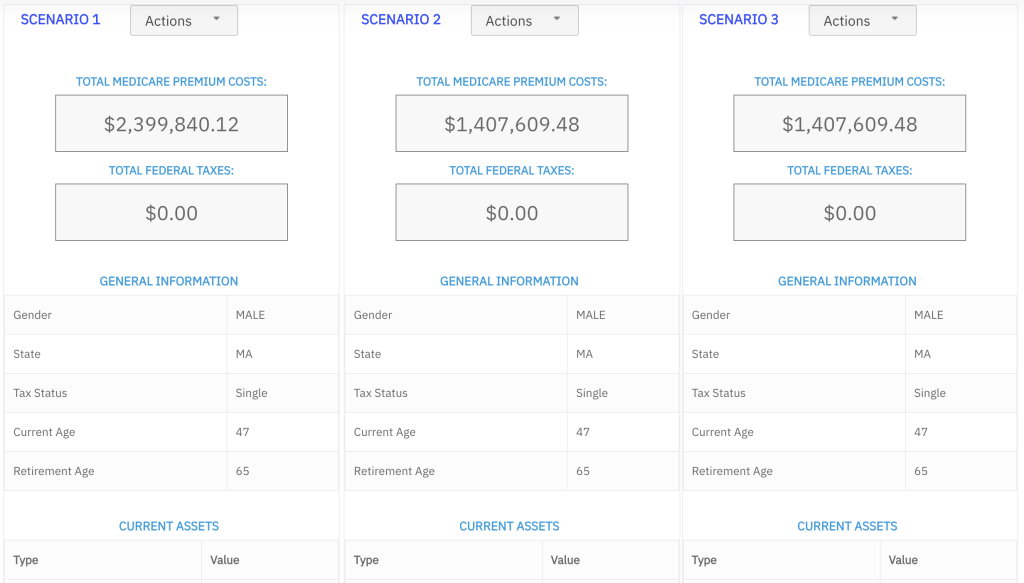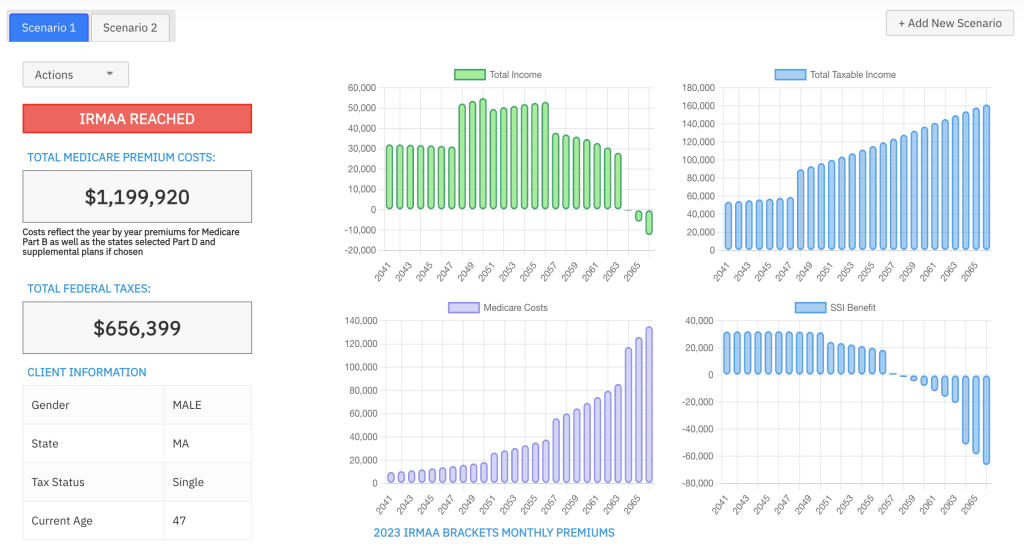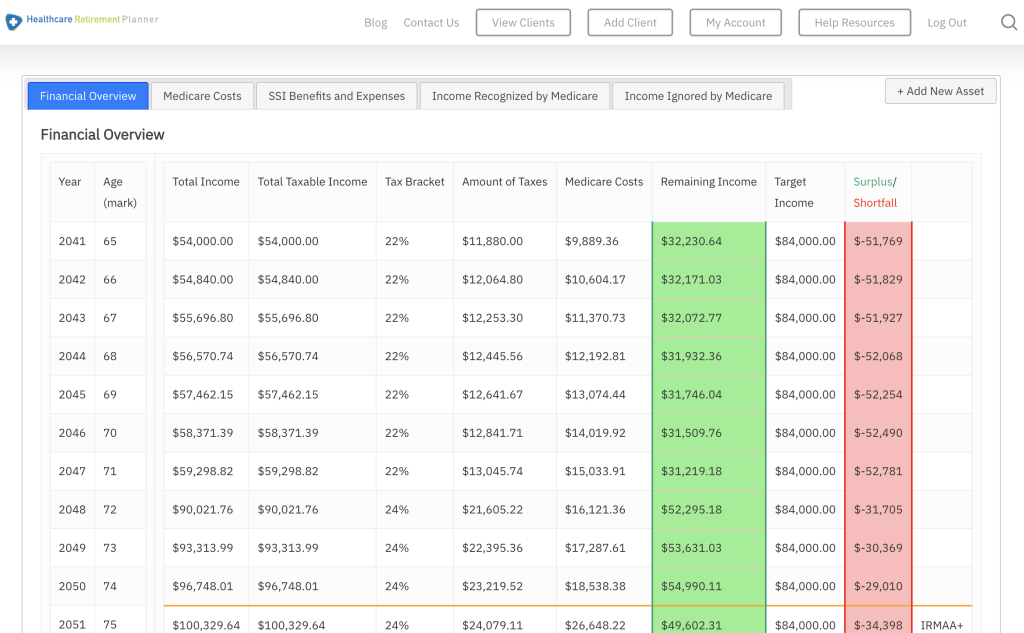understanding the complexities of the medicare surtax is crucial for financial professionals navigating the intricacies of tax planning. This comprehensive guide will delve into every aspect, from employers’ roles in withholding additional Medicare taxes to how self-employed individuals pay both shares of Social Security and SE taxes.
The blog post will then present strategic planning against levies from these taxes such as securities sale strategy during capital gains years, increasing contributions into retirement accounts like a 401K, and utilizing charitable remainder trusts to lower MAGI. Lastly, we’ll emphasize on consulting a fiduciary planner for strategic tax management related to these issues while understanding various components within U.S Federal Insurance Contributions Act regime.
Understanding the Medicare Tax and Additional Medicare Tax
The Medicare tax is like a mandatory gym membership for your wages. You gotta pay it to fund Medicare. And thanks to the Affordable Care Act, high-income earners have to pay an extra surtax called the additional Medicare tax.
Employers and the Additional Medicare Tax
Employers have the fun job of withholding the additional Medicare tax from their employees’ paychecks. For those who make over $200,000 annually, employers will withhold an additional 0.9% of their wages for the Additional Medicare Tax. It’s like a secret tax club for the wealthy.
Self-Employed? You Pay It All.
For those who are self-employed, the responsibility of paying both their own and the employer’s portion of social security taxes as well as any additional Medicare tax applies. Not only do you have to pay your own share of the social security tax, but you also get to cover the employer’s portion. And don’t forget about the additional Medicare tax if you meet the income thresholds. It’s like being your own tax collector.
Calculating all this can be as confusing as trying to solve a Rubik’s Cube blindfolded. It’s advisable to consult a specialist prior to taking any fiscal actions; believe me, it’ll be worth the effort. Trust me, it’s worth it.
- Taxable Income: If you’re single and make over $200k or married and earn more than $250k together, get ready for some extra tax love.
- Filing Status: How you file your taxes can affect how much you owe. So choose wisely, my friend.
- Social Security Benefits: Don’t forget about those retirement savings plans. They can have an impact on your overall tax situation.
Criteria for Applying the Additional Medicare Tax
The Tax kicks in when your self-employment income exceeds $200,000. It’s like a surtax to make sure the high rollers contribute more to healthcare. The tax rate is an extra 0.9% on top of the regular medicare tax if you earn above certain thresholds based on your filing status.
Calculating Liabilities for the Additional Medicare Tax with IRS Publication 15 (Circular E)
To figure out how much you owe for this extra tax, check out IRS Publication 15 (Circular E), Employer’s Tax Guide. It’s like a cheat sheet for employers on how to withhold and pay these taxes, including which wages are subject to social security and medicare taxes.
Impact of Filing Status on Application of Extra Percentage
Your filing status determines if you’re on the hook for the additional Medicare surtax. Here’s the deal:
- Single taxpayers: If you make over $200,000, you have to pay an extra 0.9% in Medicare taxes.
- Couples who file jointly: You’ll owe this surtax if your combined income is over $250,000.
Remember, these numbers can change each year due to inflation, so stay updated with info from reliable sources like IRS publications or trusted financial advisors.
Net Investment Income Surtax: A Taxing Tale
The Affordable Care Act (ACA) brought us the net investment income surtax, a tax that helps fund Medicaid services expansion. It’s like a sneaky little tax ninja, lurking in the shadows of your income.
This surtax only applies if your Modified Adjusted Gross Income (MAGI) exceeds certain limits based on your filing status. It’s like a secret club with strict membership rules.
MAGI Components: The Good, the Bad, and the Excluded
Your MAGI includes all sorts of income, from dividends to rental income. But fear not, some income is excluded from the surtax calculation.
- Social security benefits: They usually don’t count, unless they’re a big chunk of your earnings. It’s like a little gift from Uncle Sam.
- Tax-exempt interest: Money from tax-exempt investments doesn’t count either. It’s like discovering a hidden treasure trove of riches at the end of a brilliant, colorful arc.
Form 8960: The Tax Wizard’s Tool
If you think you might owe the surtax, use Form 8960 to calculate your liability. It’s like having a magical calculator that reveals your fate.
Understanding the Medicare taxes and any tax FAQs is key to securing your financial future. The ACA has shaken things up, so stay informed and keep those dollars in check.
Why You Need a Fiduciary Planner for Tax Management
The Additional Medicare Tax, Affordable Care Act, and federal insurance contributions act can make your head spin. Don’t drown in the complexity – consult a fiduciary planner.
Unlike other financial advisors, fiduciary planners prioritize your best interests. They’ll help you navigate tricky topics like taxable income, filing status, and social security benefits.
Wondering how much additional medicare tax applies to you? A fiduciary planner has the answers. They’ll guide you through withholding additional medicare tax and explain what happens when single taxpayers earn over $200k.
But that’s not all. Fiduciary planners can also show you strategies to lower your Modified Adjusted Gross Income (MAGI) and reduce your tax exposure.
With healthcare financing reforms like the ACA, it’s crucial to work with a fiduciary planner who understands the complexities. Don’t make financial decisions blindly – consult professionals like CBIZ MHM professional services for tailored solutions aligned with your goals.
Comprehending the intricate nature of the American system, FICA is a Federal Insurance Contributions Act. Federal Insurance Contributions Act (FICA)
The U.S. Federal Insurance Contributions Act (FICA) is like a Rubik’s Cube of taxes and benefits, constantly changing and challenging to unravel. It’s a maze of Medicare taxes, social security benefits, and more, all affected by legislation like the Affordable Care Act.
One piece of this puzzle is the Medicare tax. It’s a mandatory tax on wages that funds healthcare for older Americans and people with disabilities. Everyone, including employees, employers, and self-employed individuals, pays this tax.
But wait, there’s more. The Affordable Care Act introduced an additional Medicare tax for high earners. If you make over $200k (single) or $250k (married filing jointly), you’ll face this surtax. Ouch.
And let’s not forget the net investment income surtax, another ACA creation. A 3.8% levy on specified income from investments is in place if your Modified Adjusted Gross Income (MAGI) surpasses certain limits, depending on filing status.
- MAGI: It’s your taxable income plus some deductions, like student loan interest or tuition fees. Fancy, huh?
- Filing Status: Are you single, married, or something in between? Your marital status determines if you’ll be hit with these extra taxes.
To navigate this tax labyrinth, you might need a strategy. Talk to a financial advisor they may recommend selling securities at a loss when you have capital gains or contributing more to retirement accounts like a 401K. It’s all about lowering your MAGI and dodging those taxes.
FAQs
How do I avoid the Medicare 3.8% surtax?
You can potentially dodge the Medicare 3.8% surtax by keeping your modified adjusted gross income (MAGI) below the threshold.
Who pays the 3.8% surtax?
The Medicare 3.8% surtax, also known as Net Investment Income Tax (NIIT), is paid by individuals, estates, and trusts with an income above certain thresholds.
What triggers the surtax?
A high MAGI that exceeds specific thresholds set by the IRS triggers the Medicare Surtax.
How does it work?
The Medicare Surtax applies a rate of 0.9% on earned income and a separate tax of 3.8% on investment income when MAGI crosses a certain limit.






